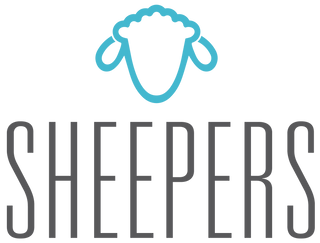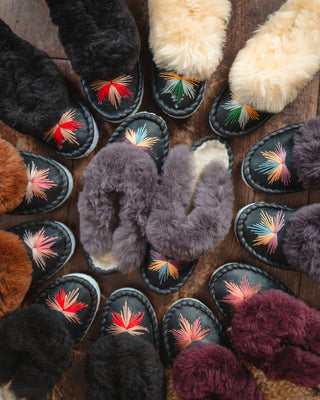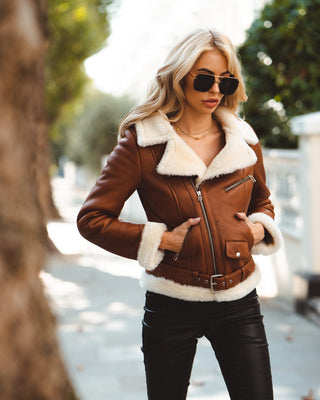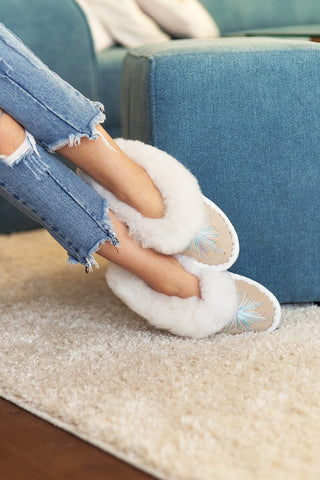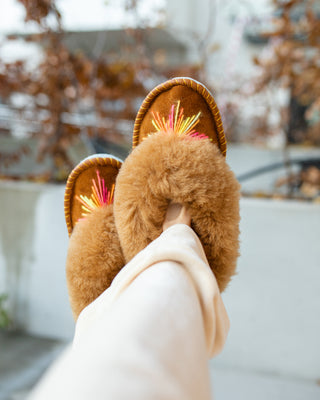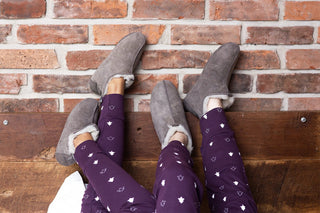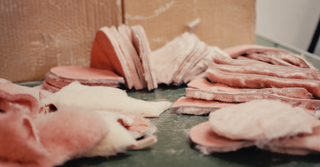Overview: What is Wool?
Have you ever wondered how the clothes or shoes you wear made of wool make you feel so impossibly comfortable and cosy?
Wool is a material unlike any other. It’s a natural fibre made from the protective coats of different mammals, such as goats, sheep, and ‘camelids’ – the latter is a group of animals which includes the llama, camel, vicuña, and alpaca.
Wool is commonly used in a variety of goods today – from upper and lower garments to shoes, socks, and more, but that shouldn’t come as a surprise because it is a highly sustainable material. In fact, the best quality and most sustainable wool is always sheared carefully from animals each year, requiring minimal resources to process – thus, reducing its carbon footprint. The sheep wool in Sheepers, for instance, is 100% biodegradable, producing significantly less carbon emissions than traditional, man-made fibers.
All in all, wool is a very special choice for a variety of garments and footwear because, it is:
- Renewable – As long as the world doesn’t run out of grass for sheep to graze on, they will continue to provide us with that wonderful, supersoft, and cosy wool!
- Anti-wrinkle – Wool clothes and shoes have a tendency to naturally stretch out a little to accommodate the natural shape of your foot or body, and then return to their original shape soon after. Remarkable!
- Antistatic – Wool has excellent moisture absorbing and wicking properties, so you’ll hardly find any static charge in it.
- Stain-resistant – Wool is more stain resistant than other common types of fibre. Its protective layer prevents stain absorption, although not entirely, of course, as with any fibre used for clothing or footwear. With that said, wool is easier to clean too than most traditional fibres.
- Biodegradable – Spent wool can be very easily returned to the earth, where it decomposes rather quickly.
- All-season – Wool offers great suitability for all seasons as the material adapts quite easily to changes in your body temperature no matter what time of year it is.
- Odour-resistant and breathable – Wool has the ability to quickly absorb and evaporate moisture, thanks to its moisture-wicking properties, thus, making it breathable all year round and eliminating unpleasant odours.
How many Types of Wool are there?
Naturally, the most commonly available type of wool comes from sheep. But that’s not to say that there is just one type of sheep’s wool. As far as we know, there are nearly twenty different types of wool (possibly more), with each different breed of sheep producing a unique fibre. However, we’ve narrowed down our list to ten of the most common types:
1. Virgin Wool
Also referred to as lambswool, virgin wool is probably the softest type of wool you can wear, as the fibres have not undergone any processing. It’s derived from a sheep’s very first shearing, as this is the softest coat a sheep will ever produce throughout its life.
2. Cashmere
Cashmere is one of the most common types of wool, featuring a soft and delicate surface which comes straight from the cashmere goat’s undercoat. The ultra-fine fibres are mostly from the neck of the goat and it is a really fine type of wool (just like merino), making it excellent for all kinds of apparel.
3. Merino Wool
As the name implies, merino wool comes from the merino sheep. The fibers are a lot finer than regular wool, featuring less scales, so it’s a lot softer than normal wool too. Among merino’s main properties are incredible temperature regulating properties, making it great for all-year-round wear.
4. Shetland Sheep Wool
Again, precisely as the name implies, this type of wool comes straight from the sheep grazing on the lovely Shetland Islands in Scotland. The wool fibre is coarser and feels itchier compared to merino wool, as it comes from the sheep’s undercoat. Still, it is a very soft and durable type of wool.
5. Alpaca Wool
Alpacas are beautiful animals native to the South American region even though they have gained widespread popularity across the world but that’s not by chance: they produce the kind of wool that is regarded by experts as one of the finest in the world. However, as soft as the fibres are, they can also become rather itchy.
6. Llama Wool
Llamas are very closely related to alpacas, and so, they also produce quality wool! However, the type of wool llamas produce is far too rough to be worn as clothes or shoes. But that doesn’t stop wool producers from making outwear as some people don’t mind overcoats and jackets made from llama wool. Plus, this type of wool is often used for decorative pieces like rugs and wall hangings.
7. Vicuña
The vicuña is related to both alpacas and llamas, producing some of the rarest wool currently known. Interestingly, this wool type was used by the Incan civilisation, reserving and limiting its use to royalty only, owing to the softness and excellent warmth. The Peruvian government today closely monitors vicuña wool production as there are now concerns over extinction.

8. Camel Wool
Camel wool is known for its rough material so it is well-suited to outerwear, boasting really great insulating properties. This type of wool takes the coarsest camel hair so they are particularly useful as carpet backing.
9. Qiviut Wool
Qiviut wool comes from the arctic muskox in Alaska and Canada. This type of wool is extracted from the animals in the molting season only, allowing breeders to collect fallen wool or comb it straight off the animals. The wool’s superfine nature makes it unbelievably soft but still boasts really strong fibres.

10. Sheepskin Wool
Some people tend to get confused when they hear the word “sheepskin” and wonder if it can even be called ‘wool’. Well, it is actually, as it is made up of both the skin and wool fibres of sheep. The key benefit of sheepskin over other wools is that the fibres remain attached to the leather and in their original state, even during the tanning process. This is why sheepskin slippers or jackets, for example, feel impossibly cosy and luxurious to wear!
